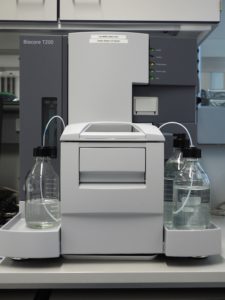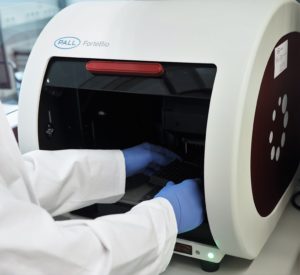Biosensor
Surface Plasmon Resonance
Affinity measurements made easy.
Enables a label-free measurement of association (kon)and dissociation (koff) constants for all kinds of proteins (low and high molecular mass), DNA, RNA, lipids, cells, viruses and polysaccharides in different environments. The measurement is based on surface plasmon resonance, an optical technique which allows exceptional sensitivity, reliability and precision.
It can be used for a broad range of applications which include Kinetics/affinity characterization, kinetics/affinity screening, single-cycle kinetics, LMW interaction analysis, fragment screening, epitope mapping, immunogenicity, concentration analysis, calibration-free concentration analysis, thermodynamics, comparability, sample recovery MS.
TECHNICAL INFORMATION
Biacore T200. GE Healthcare. Obtained 2017.
The system has a capacity of 384 samples including an autosampler, that allows unattended operation up to 48h. Extraordinary sensitivity make it possible to work with a sample concentration of as little as 1pM and up to 2 mM. The affinity range lies between 10 fM and 1 mM. The broad temperature range between 4°C and 45°C further enables the study of thermodynamic parameters.
More information and details on booking and terms of usage!
Bio-Layer Interferometry

Interference in a positive way.
Octet systems use Bio-Layer Interferometry to monitor binding events of proteins and other biomolecules in real-time. This label-free analysis allows determination of affinity, kinetics and concentration. Due to high throughput at low operational costs, a significant easier, faster and better characterization of drug candidates is possible. Applications include expression screening, on- and off-rate screening, epitope binning, cell line development and bioprocess optimization.
TECHNICAL INFORMATION
Octet Red96e. Pall FortéBio. Obtained 2017.
The system supports 96-well plates and provides 8-well simultaneous read-outs obtaining results in only 30 min for 96 samples. It has a large dynamic range from ng/mL to mg/mL for quantitation of biomolecules. Furthermore, it allows accurate kinetic analyses for large macromolecules such as IgG down to only 150 Da fragments.
More information and details on booking and terms of usage!